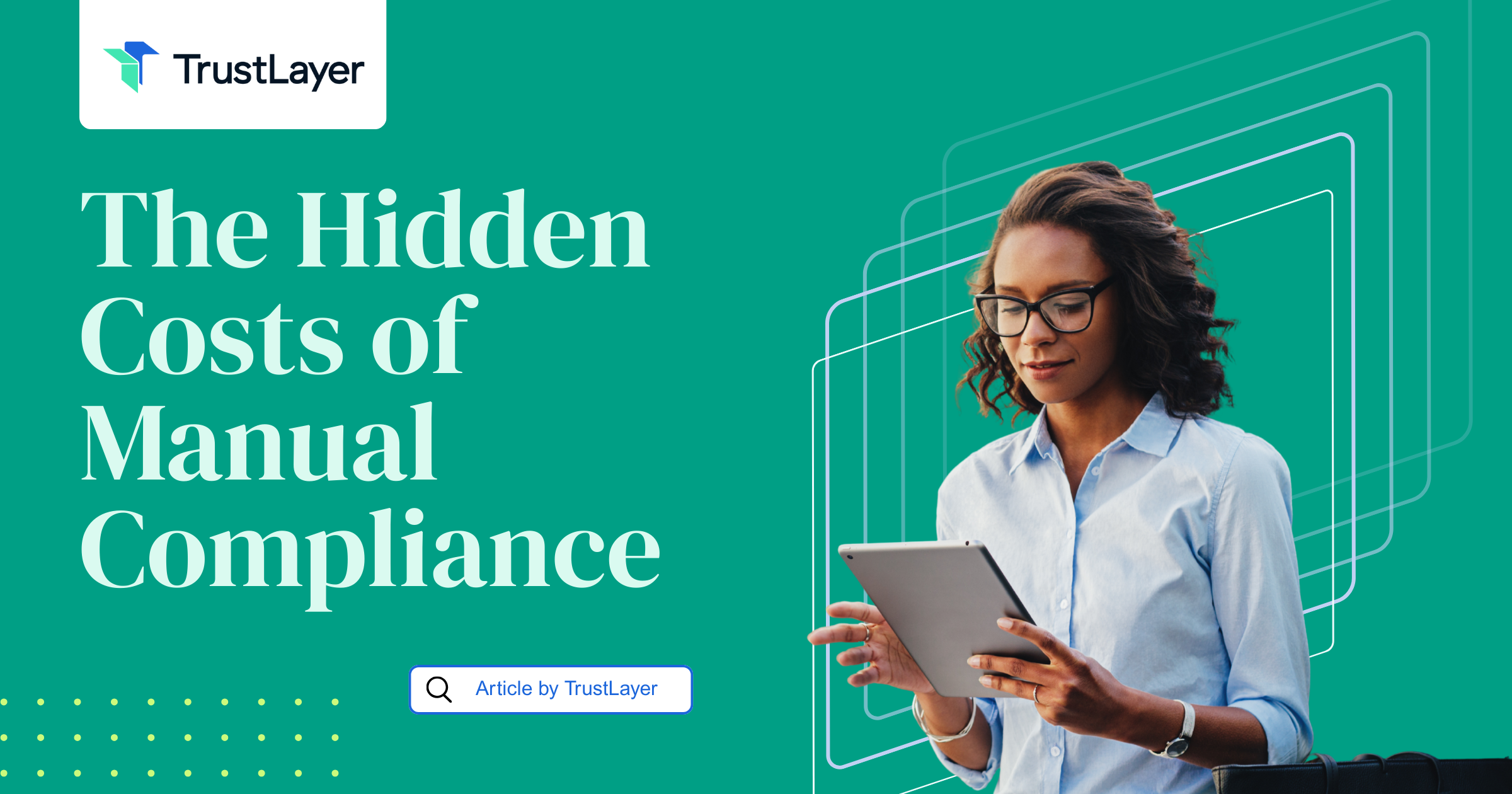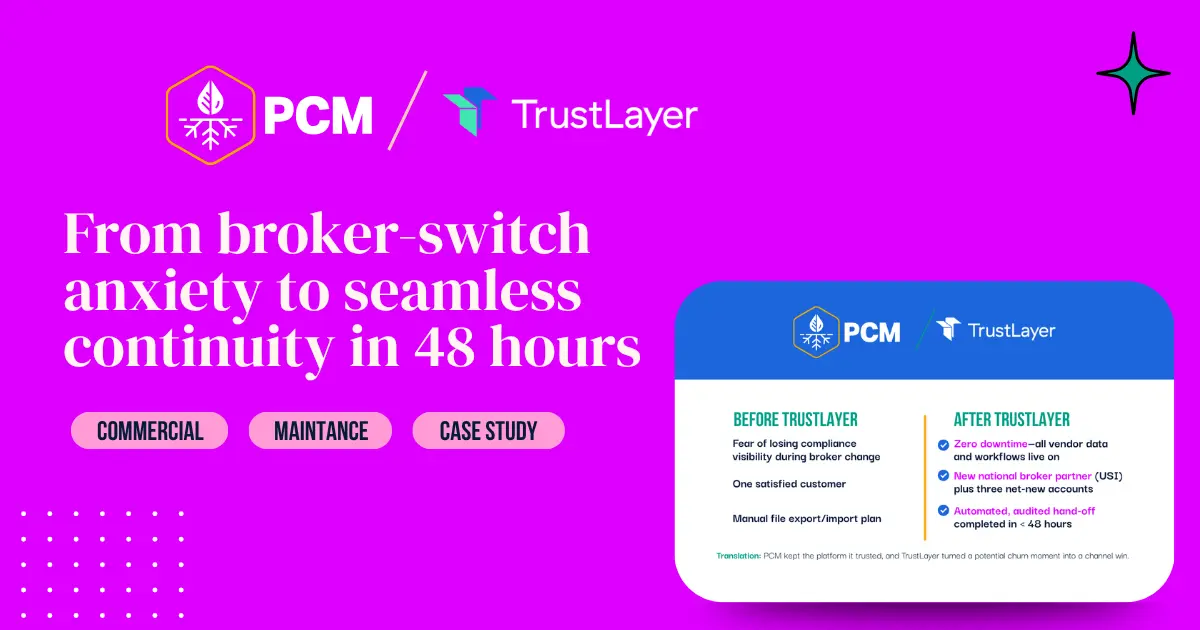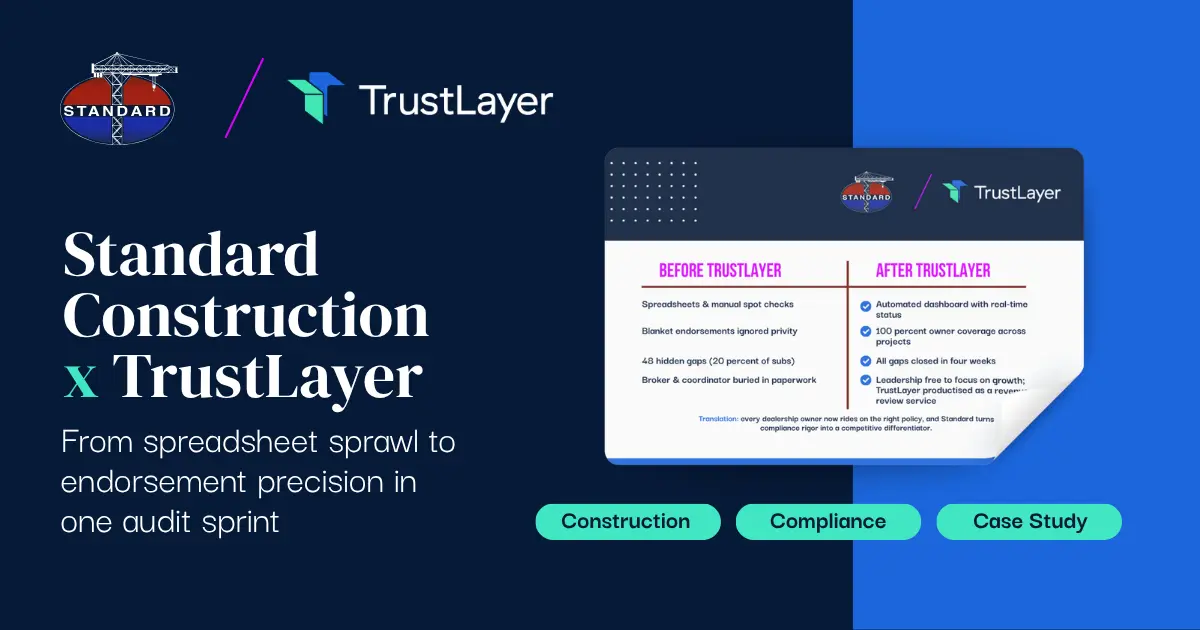Understanding COI Tracking: A Comprehensive Guide
In today's fast-paced business environment, managing risk has become a critical component of organizational success. One area that requires careful attention is the tracking of Certificates of Insurance (COI). In this comprehensive guide, we will delve into the intricacies of COI tracking, explore its importance, mechanics, types, benefits, and the challenges organizations face in this process.
What is COI Tracking?
COI tracking refers to the systematic monitoring and management of insurance certificates obtained from vendors, contractors, and other third parties. By ensuring that all parties involved have appropriate insurance coverage, organizations protect themselves from potential liabilities and minimize risks.
Defining COI Tracking
COI tracking involves verifying the validity and compliance of insurance certificates, confirming that the coverage aligns with the organization's requirements. This process helps avoid coverage lapses and potential lawsuits.
When it comes to COI tracking, organizations establish a comprehensive system to oversee the insurance certificates of their vendors, contractors, and other third parties. This system includes regular reviews and updates to ensure that the insurance coverage remains valid and meets the organization's specific requirements. By diligently monitoring these certificates, organizations can identify any potential gaps in coverage and take necessary actions to mitigate risks.
Furthermore, COI tracking involves not only verifying the existence of insurance coverage but also confirming its adequacy. Organizations must ensure that the insurance policies held by their vendors and contractors provide sufficient protection against potential risks and liabilities. This involves carefully reviewing the policy limits, exclusions, and endorsements to ensure that they align with the organization's risk tolerance and contractual obligations.
Importance of COI Tracking
Effective COI tracking plays a vital role in risk management. By ensuring certificates are accurate and up-to-date, organizations reduce the likelihood of litigation arising from inadequate insurance coverage. It also helps safeguard their reputation and build trust with stakeholders.
When organizations actively track and manage COIs, they demonstrate their commitment to risk mitigation and responsible business practices. This proactive approach not only protects the organization from potential financial losses but also enhances its overall credibility and trustworthiness in the eyes of clients, partners, and regulatory bodies.
Moreover, COI tracking enables organizations to identify potential gaps in insurance coverage and take prompt action to address them. By regularly reviewing the certificates and ensuring compliance, organizations can avoid situations where a vendor or contractor's insurance has lapsed or does not meet the necessary requirements. This proactive approach minimizes the risk of being held liable for damages or losses caused by uninsured or underinsured third parties.
Additionally, COI tracking helps organizations maintain strong relationships with their vendors and contractors. By requiring proof of insurance and actively monitoring the validity of certificates, organizations ensure that their business partners are adequately protected. This fosters a sense of trust and confidence, as all parties involved can rely on the fact that potential risks are appropriately covered.
In conclusion, COI tracking is an essential process for organizations to manage and monitor insurance certificates obtained from vendors, contractors, and other third parties. By diligently verifying the validity and compliance of these certificates, organizations protect themselves from potential liabilities, minimize risks, and build trust with stakeholders.
The Mechanics of COI Tracking
Understanding how COI tracking works is key to implementing an efficient and robust system. Let's explore the essential components and processes involved:
How COI Tracking Works
The COI tracking process typically starts with obtaining insurance certificates from third parties. These certificates are then reviewed for verification purposes. It involves checking details such as policy limits, coverage period, and additional insured status. Any discrepancies or inconsistencies are flagged for resolution.
Once the insurance certificates are obtained, they are stored in a centralized system for easy access and management. This system allows for efficient tracking and monitoring of the certificates throughout their validity period.
Automated reminders are an integral part of COI tracking systems. Advanced systems can send notifications to the relevant stakeholders, such as vendors, clients, and internal teams, to ensure that policy renewals and updates are not overlooked. These automated reminders help in maintaining up-to-date insurance coverage and mitigating any potential risks.
Document compliance is another crucial component of COI tracking. It involves ensuring that all insurance-related documents meet regulatory and organizational requirements. This includes verifying that the certificates contain the necessary information, such as the correct policyholder name, effective dates, and coverage limits. Additionally, the system can also perform checks to ensure that the insurance carriers are reputable and financially stable.
A comprehensive vendor database is an essential part of COI tracking systems. This database serves as a repository of vendor information, including insurance details. It allows for easy retrieval and verification of insurance certificates when needed. The vendor database can also be integrated with other systems, such as procurement or vendor management platforms, to streamline the overall process and ensure that all vendors are compliant with insurance requirements.
Key Components of COI Tracking
COI tracking systems consist of several key components, including:
- Policy Management: Centralized storage and management of insurance policies and related documents. This component ensures that all policies are easily accessible and organized, reducing the risk of missing or misplaced documents.
- Automated Notifications: Advanced systems can send automated reminders for policy renewals and updates. These notifications help in maintaining compliance and avoiding any lapses in insurance coverage.
- Document Compliance: Ensuring that all insurance-related documents meet regulatory and organizational requirements. This component includes verifying the accuracy and completeness of insurance certificates and other relevant documents.
- Vendor Database: A comprehensive repository of vendor information, including insurance details. This component allows for efficient tracking and verification of vendor compliance with insurance requirements.
By having these key components in place, COI tracking systems can effectively manage and monitor insurance certificates, ensuring that all stakeholders are adequately protected and compliant with insurance requirements.
Types of COI Tracking
When it comes to managing and tracking Certificates of Insurance (COIs), organizations have a range of options to choose from. The method they select depends on their specific needs, resources, and the volume of third-party vendors they work with. Let's explore two common approaches in more detail:
Manual COI Tracking
Manual COI tracking involves the traditional method of reviewing insurance certificates manually, often through email or paper-based processes. In this approach, organizations rely on their staff to carefully examine each COI and ensure compliance with their requirements.
While manual COI tracking can be effective for organizations with lower volumes of third-party vendors, it does have its limitations. The process can be time-consuming, as staff members need to meticulously go through each document to verify the necessary information. Moreover, human error is always a possibility, as individuals may overlook important details or make mistakes during the review process.
Despite these challenges, manual COI tracking can still be a viable option for organizations that have limited resources or prefer a more hands-on approach. It allows for direct communication with vendors and provides an opportunity to build relationships and address any concerns or questions that may arise during the review process.
Automated COI Tracking
Recognizing the need for a more efficient and reliable method, many organizations have turned to automated COI tracking. This approach leverages technology solutions to streamline the collection, validation, and monitoring of COIs.
With the help of specialized software, organizations can automate the entire COI tracking process. The software can be integrated with various data sources, such as insurance databases, to automatically collect and verify COIs. This eliminates the need for manual data entry and reduces the risk of errors or oversights.
Automated COI tracking offers several advantages over the manual approach. First and foremost, it significantly reduces administrative burden and frees up valuable time for staff members to focus on other critical tasks. The software can automatically send reminders to vendors when COIs are about to expire, ensuring that the organization always has up-to-date documentation.
Furthermore, automated COI tracking provides organizations with a centralized and easily accessible repository for all their COIs. This allows for quick and efficient retrieval of information whenever needed, saving time and effort.
While implementing an automated COI tracking system may require an initial investment in software and training, the long-term benefits can outweigh the costs. It provides organizations with a more streamlined and reliable process, minimizing the risk of overlooking important details and ensuring compliance with insurance requirements.
In conclusion, both manual and automated COI tracking methods have their merits. Organizations should carefully evaluate their specific needs, resources, and the volume of third-party vendors they work with to determine the most suitable approach. Whether they choose to rely on human review or leverage technology, the goal remains the same: to effectively manage and track COIs to mitigate potential risks and protect the organization's interests.
Benefits of COI Tracking
Capturing the numerous benefits of COI tracking can be compelling for organizations aiming to strengthen their risk management strategies. Let's explore some notable advantages:
Risk Management Benefits
COI tracking mitigates the potential risks associated with inadequate insurance coverage. By ensuring all parties have appropriate policies, organizations protect themselves against potential liabilities, reducing the chances of costly legal disputes.
Moreover, COI tracking provides organizations with valuable insights into their risk profile. By analyzing the data collected, organizations can identify trends and patterns in their insurance coverage, enabling them to make informed decisions about their risk management strategies. This proactive approach allows organizations to stay ahead of potential risks and take necessary measures to mitigate them.
According to recent industry insights, companies with robust COI tracking systems report a significant reduction in claim denials and improved risk management outcomes. By having a comprehensive and up-to-date record of insurance policies, organizations can easily provide proof of coverage when needed, minimizing the chances of claim denials and ensuring smooth claims processing.
Operational Efficiency Benefits
Efficient COI tracking systems improve workflow processes, saving time and effort. With automated reminders for upcoming policy renewals, organizations can proactively address potential coverage gaps. This results in streamlined operations and enhanced productivity.
Furthermore, COI tracking enables organizations to effectively manage their relationships with vendors, contractors, and other third parties. By having a centralized repository of COIs, organizations can easily verify the insurance status of their partners, ensuring compliance with contractual requirements. This streamlined process not only saves time but also reduces the administrative burden associated with manual COI verification.
Additionally, organizations can leverage COI tracking to strengthen their negotiation power with insurance providers. By having a comprehensive overview of their insurance coverage, organizations can identify areas where they may be over-insured or under-insured. Armed with this knowledge, organizations can negotiate better terms and premiums, optimizing their insurance portfolio and reducing costs.
In conclusion, COI tracking offers a range of benefits for organizations. From mitigating risks and improving risk management outcomes to enhancing operational efficiency and strengthening relationships with third parties, COI tracking is a valuable tool for organizations aiming to protect their interests and optimize their insurance strategies.
Challenges in COI Tracking
While COI tracking offers substantial benefits, it is not without its challenges. Let's take a closer look at some common obstacles:
Common Obstacles in COI Tracking
Organizations often face challenges such as:
- Manual Handling: Traditional, paper-driven processes are prone to errors and inefficiencies.
- Lack of Standardization: Different vendors may provide COIs in various formats, making verification and comparison challenging.
- Incomplete or Expired Certificates: Ensuring all COIs are accurate and up-to-date is a continuous challenge.
Overcoming COI Tracking Challenges
Organizations can overcome COI tracking challenges by implementing automated solutions and streamlining processes. Advanced COI tracking platforms, such as TrustLayer, offer reliable and efficient COI tracking capabilities. These solutions use cutting-edge technology to validate certificates, ensure compliance, and provide real-time insights, enabling organizations to navigate the complex landscape with ease.
Understanding the intricacies of COI tracking is crucial for organizations aiming to minimize risks and protect their reputation. By leveraging automated solutions like TrustLayer, organizations can achieve greater efficiency, reduce liability, and enhance overall operational effectiveness. Invest in robust COI tracking processes today and pave the way for a future of secure business transactions.
















